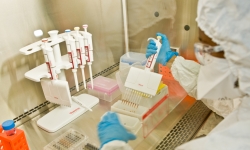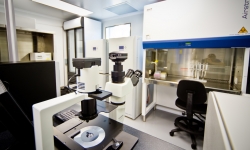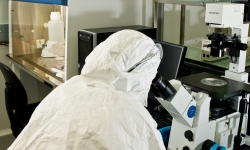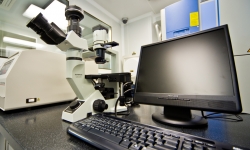Biosafety level 3 research facilities
The Biosafety level three (BSL-3) laboratory is a state-of-the-art facility which enables scientists to conduct research and proof-of-concept studies in developing new diagnostics or therapeutics in HIV/Aids, tuberculosis (TB) and other infectious diseases. The facility, also known as the high-containment facility, is a controlled-access laboratory required for all experiments involving hazard group three pathogens (P3) of high potential risk to laboratory personnel and the environment.
The laboratory has been designed with safety in mind; it is accessed via two self-closing and self-locking doors to restrict and control entry while provision is made for independent laboratory.
The BSL-3 is accessible to researchers nation-wide and internationally. The cost is determined on a case-to-case basis, and is negotiated at the point of closing the agreement.
Technical Specifications
The laboratories are equipped with ESCO Airstream Class II bioSafety cabinets for manipulation of live pathogens, high-capacity ThermoScientific Forma 700 freezers and New Brunswick Galaxy 170R incubators. In addition, the HIV BSL-3 has S- and C-1000 thermal cyclers, a culture microscope, and Beckmann Coulter DTX 880 multimode detector as well as an Optima L-80XP ultracentrifuge. The TB BSL-3 has a fluorescent microscope. The BSL-3 facility is managed through a Desigo Insight Building Management System which enables the CSIR to monitor functionality of critical equipment. It also uses a STARLIM laboratory information management program to track and monitor resources and reagents.









